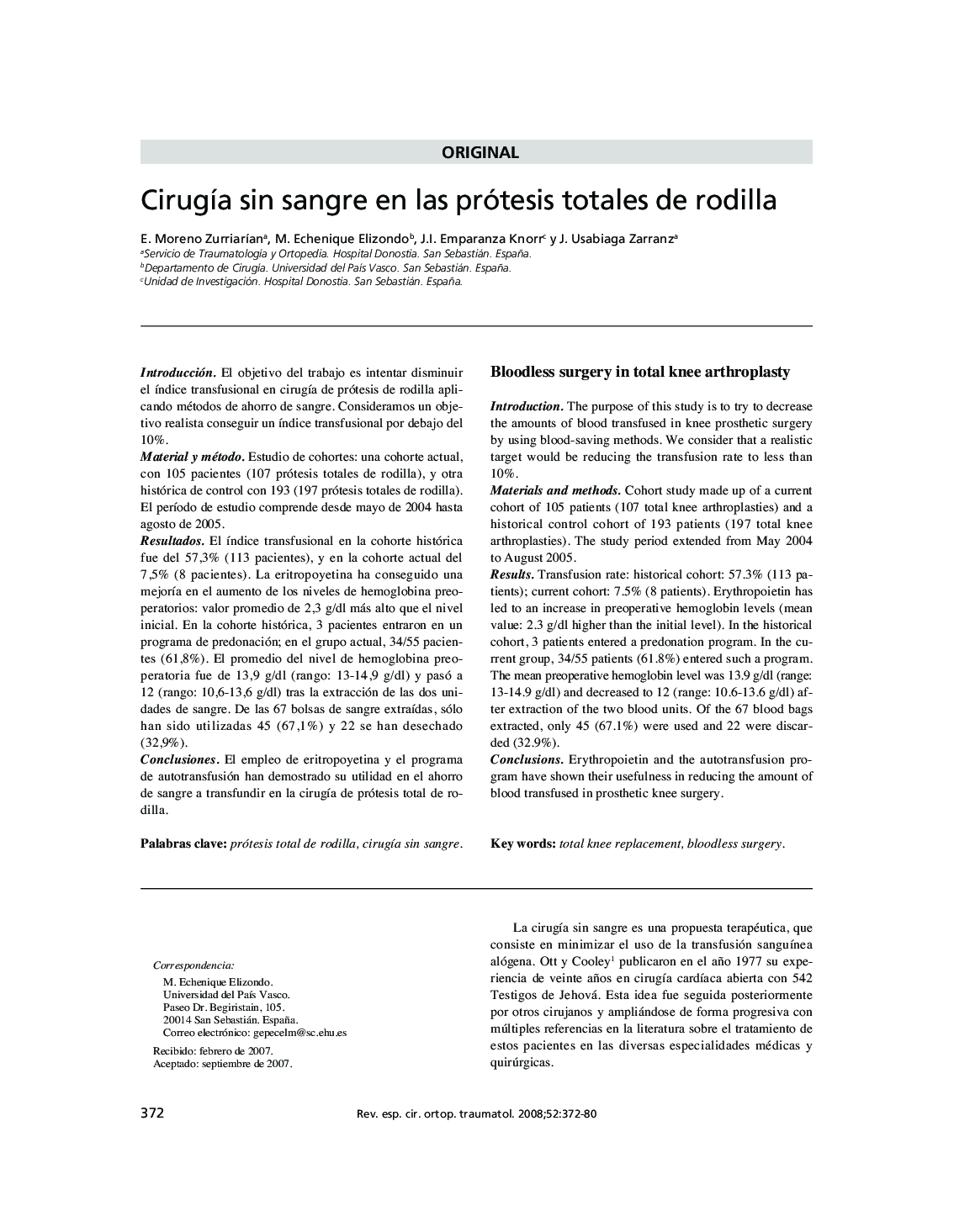| Article ID | Journal | Published Year | Pages | File Type |
|---|---|---|---|---|
| 4086584 | Revista Española de Cirugía Ortopédica y Traumatología | 2008 | 9 Pages |
IntroducciónEl objetivo del trabajo es intentar disminuir el índice transfusional en cirugía de prótesis de rodilla aplicando métodos de ahorro de sangre. Consideramos un objetivo realista conseguir un índice transfusional por debajo del 10%.Material y métodoEstudio de cohortes: una cohorte actual, con 105 pacientes (107 prótesis totales de rodilla), y otra histórica de control con 193 (197 prótesis totales de rodilla). El período de estudio comprende desde mayo de 2004 hasta agosto de 2005.ResultadosEl índice transfusional en la cohorte histórica fue del 57,3% (113 pacientes), y en la cohorte actual del 7,5% (8 pacientes). La eritropoyetina ha conseguido una mejoría en el aumento de los niveles de hemoglobina preoperatorios: valor promedio de 2,3 g/dl más alto que el nivel inicial. En la cohorte histórica, 3 pacientes entraron en un programa de predonación; en el grupo actual, 34/55 pacientes (61,8%). El promedio del nivel de hemoglobina preoperatoria fue de 13,9 g/dl (rango: 13-14,9 g/dl) y pasó a 12 (rango: 10,6-13,6 g/dl) tras la extracción de las dos unidades de sangre. De las 67 bolsas de sangre extraídas, sólo han sido utilizadas 45 (67,1%) y 22 se han desechado (32,9%).ConclusionesEl empleo de eritropoyetina y el programa de autotransfusión han demostrado su utilidad en el ahorro de sangre a transfundir en la cirugía de prótesis total de rodilla.
IntroductionThe purpose of this study is to try to decrease the amounts of blood transfused in knee prosthetic surgery by using blood-saving methods. We consider that a realistic target would be reducing the transfusion rate to less than 10%.Materials and methodsCohort study made up of a current cohort of 105 patients (107 total knee arthroplasties) and a historical control cohort of 193 patients (197 total knee arthroplasties). The study period extended from May 2004 to August 2005.ResultsTransfusion rate: historical cohort: 57.3% (113 patients); current cohort: 7.5% (8 patients). Erythropoietin has led to an increase in preoperative hemoglobin levels (mean value: 2.3 g/dl higher than the initial level). In the historical cohort, 3 patients entered a predonation program. In the current group, 34/55 patients (61.8%) entered such a program. The mean preoperative hemoglobin level was 13.9 g/dl (range: 13-14.9 g/dl) and decreased to 12 (range: 10.6-13.6 g/dl) after extraction of the two blood units. Of the 67 blood bags extracted, only 45 (67.1%) were used and 22 were discarded (32.9%).ConclusionsErythropoietin and the autotransfusion program have shown their usefulness in reducing the amount of blood transfused in prosthetic knee surgery.
